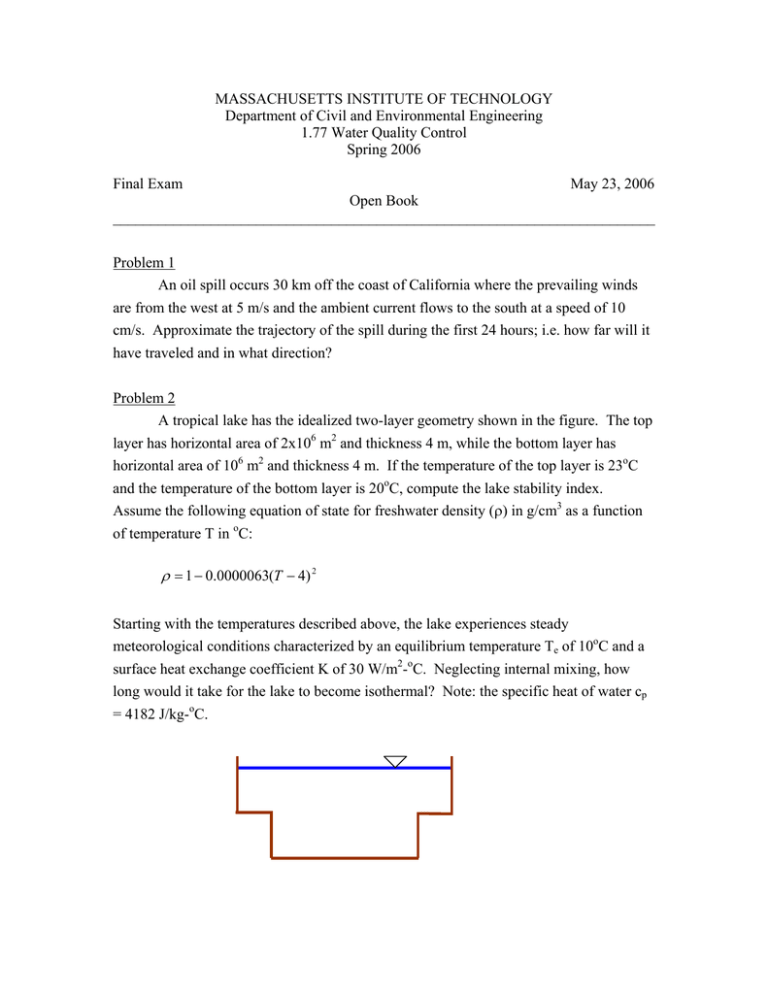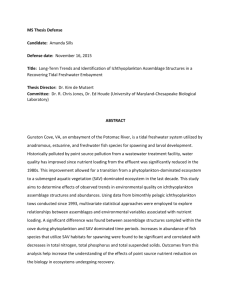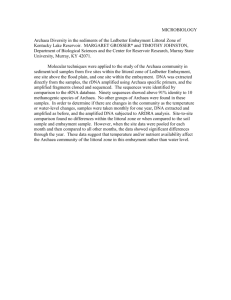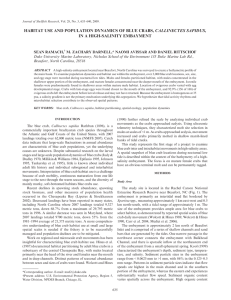MASSACHUSETTS INSTITUTE OF TECHNOLOGY Department of Civil and Environmental Engineering
advertisement

MASSACHUSETTS INSTITUTE OF TECHNOLOGY Department of Civil and Environmental Engineering 1.77 Water Quality Control Spring 2006 Final Exam May 23, 2006 Open Book ________________________________________________________________________ Problem 1 An oil spill occurs 30 km off the coast of California where the prevailing winds are from the west at 5 m/s and the ambient current flows to the south at a speed of 10 cm/s. Approximate the trajectory of the spill during the first 24 hours; i.e. how far will it have traveled and in what direction? Problem 2 A tropical lake has the idealized two-layer geometry shown in the figure. The top layer has horizontal area of 2x106 m2 and thickness 4 m, while the bottom layer has horizontal area of 106 m2 and thickness 4 m. If the temperature of the top layer is 23oC and the temperature of the bottom layer is 20oC, compute the lake stability index. Assume the following equation of state for freshwater density (ρ) in g/cm3 as a function of temperature T in oC: ρ = 1 − 0.0000063(T − 4) 2 Starting with the temperatures described above, the lake experiences steady meteorological conditions characterized by an equilibrium temperature Te of 10oC and a surface heat exchange coefficient K of 30 W/m2-oC. Neglecting internal mixing, how long would it take for the lake to become isothermal? Note: the specific heat of water cp = 4182 J/kg-oC. Problem 3 A small tidal embayment receives a steady freshwater discharge of 0.01 m3/s that contains suspended solids with concentration of 20 mg/L. The embayment has a surface area of 1 km2 and an average depth of 2 meters. During a period of one week, dye was added continuously to the inflow at a rate of 0.01 g/sec. At the end of the week, measurements within the embayment revealed an average dye concentration of 10-3 mg/L and an average particle concentration of 10-2 mg/L. (The measurements were averaged spatially over the embayment and temporally over one tidal cycle.) Based on this information compute the hydrodynamic residence time of the dye and the average fall velocity of the particles. The inflow contains trace amounts of a chemical which is sorbed to the particles. Assuming equilibrium partitioning with a solid-water partition coefficient of 104 cm3/g, estimate the percentage of the chemical in the sorbed phase in the inflow and in the embayment.







